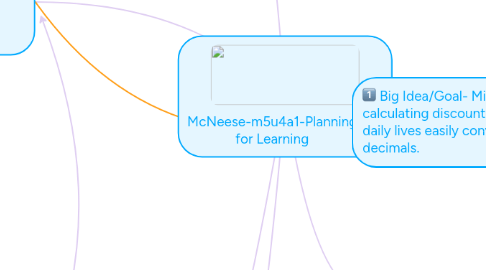
1. Breaking Tasks in to Smaller Chunks
2. Why these Strategies?
2.1. Gradual Release allows students the opportunity to experience success and to see what they are expected to do at the end of the lesson-clarifying objectives
2.2. Breaking tasks into smaller chunks gives students a chance to process information easier and to store their newly learned knowledge in their long term memory
2.3. Pre-teaching math vocabulary terms will speed the lesson along since students will have a clear idea of the terms being used and clarifies learning objectives for students.
3. Connection to Prior Knowledge- Prior to lesson students will already know how to work with fractions, decimals, and Percentages. Students will also be familiar with vocabulary words such as discount and original prices.
4. Scaffolding Strategies
4.1. Develop the lesson using Gradual Release of Responsibility-
4.1.1. Students are given examples of solved problems that meet the standard
4.1.2. Next Students are given problems with partial answers and students solve the remaining steps to solve the problem
4.1.3. Finally students are given problems to solve independently without any partial answers
4.2. Wait Time Strategy
4.2.1. Allow students time to process and answer questions- sometimes it is difficult for the teacher not to answer for the student-be patient
4.3. Pre-Teach Math Vocabulary Words
4.3.1. Any new words or words that may be misunderstood can be taught before the lesson either during a warm-up or during a previous lesson
4.4. Pause, Ask Questions, Pause, Review
4.4.1. Prepare questions ahead of time that are designed to develop deeper thinking about the topic- This can be used a a check for understanding. Also use these questions to clear up likely student misconceptions.
